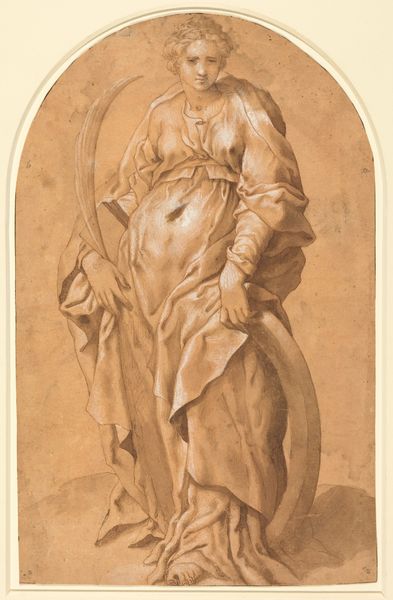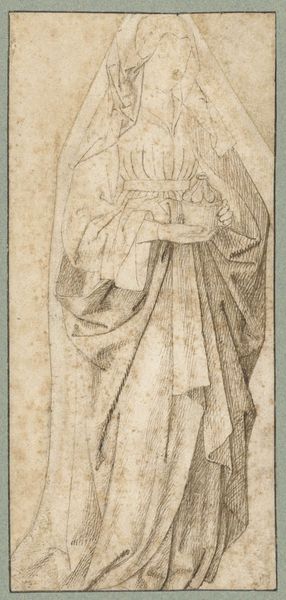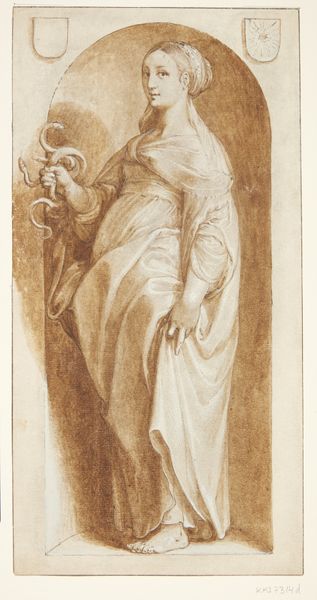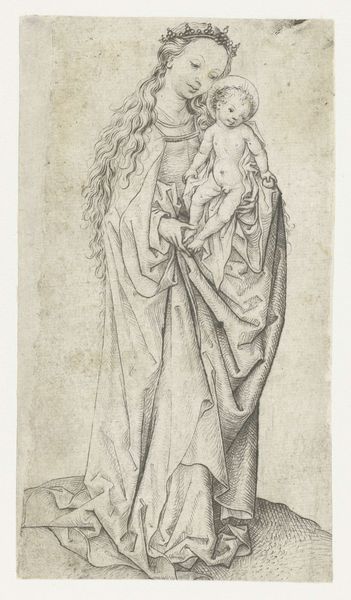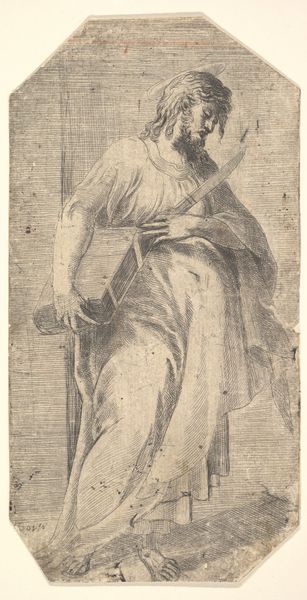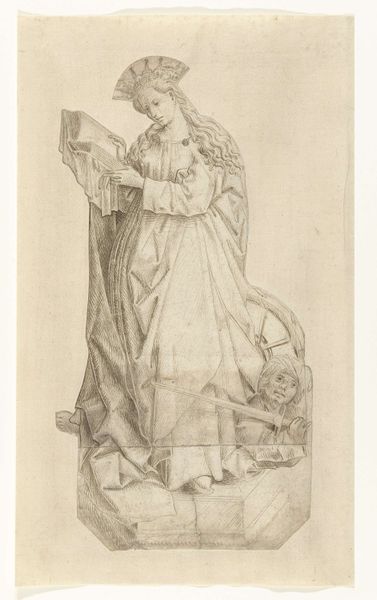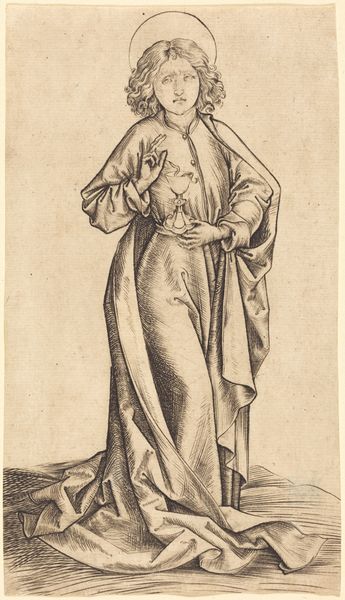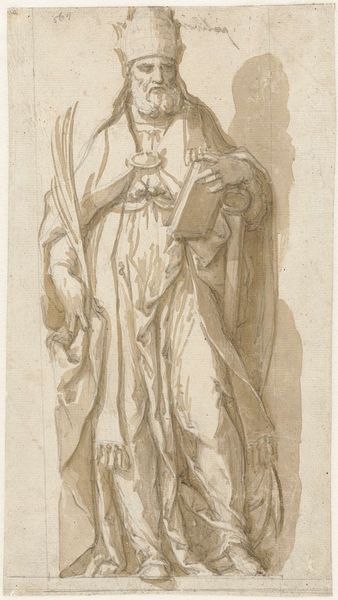
drawing, paper, ink, pen
#
drawing
#
allegory
#
mannerism
#
figuration
#
paper
#
ink
#
pen
#
northern-renaissance
Dimensions: 325 mm (height) x 165 mm (width) (bladmaal)
Editor: So, this is "Hope," a pen and ink drawing on paper by Hendrick Goltzius, created in 1592. There’s something almost melancholic about it despite the title, wouldn't you agree? I'm curious about your interpretation; what do you see in this piece? Curator: The figure's upward gaze and the anchor are traditional symbols of hope, yes, but look closer. The Mannerist style, with its elongated form and almost artificial pose, speaks to the anxieties of the time. Consider the socio-political landscape of 1592 – religious conflicts, economic instability, and the ongoing struggle for power. This "Hope" isn't a naive, blissful ideal. It is a more complex, perhaps even a desperate, grasping for something stable amidst chaos. Where do you see evidence of these anxieties in the work itself? Editor: Well, there's a tension between the ideal and the real; the woman seems to be of the working class, but is presented as an ethereal idealized form... It feels a bit paradoxical. And to be honest, the anchor seems too big, a bit unsettling... What could that signify? Curator: Exactly! The oversized anchor, the bare feet, the simple garments – these ground her in a reality that clashes with the ethereal quality you mentioned. This paradox reflects the hope of the common person in a society fraught with inequality. Perhaps Goltzius critiques the traditional allegories that serve only the elite and reminds us about how those with no power grasp for a new, different order. "Hope" then becomes not just a virtue, but a quiet call for a more just world. Do you see how that reframes our understanding? Editor: That completely changes the meaning for me! I hadn't considered it as a form of social commentary. So the artwork could embody both hope and a kind of call for justice within the political background of that moment? Curator: Precisely! Art so often acts as a mirror reflecting societal issues and challenges of a certain time. It urges us to interrogate those complexities to understand our shared humanity better. Editor: I'll definitely look at these pieces in a new light, thank you!
Comments
No comments
Be the first to comment and join the conversation on the ultimate creative platform.
